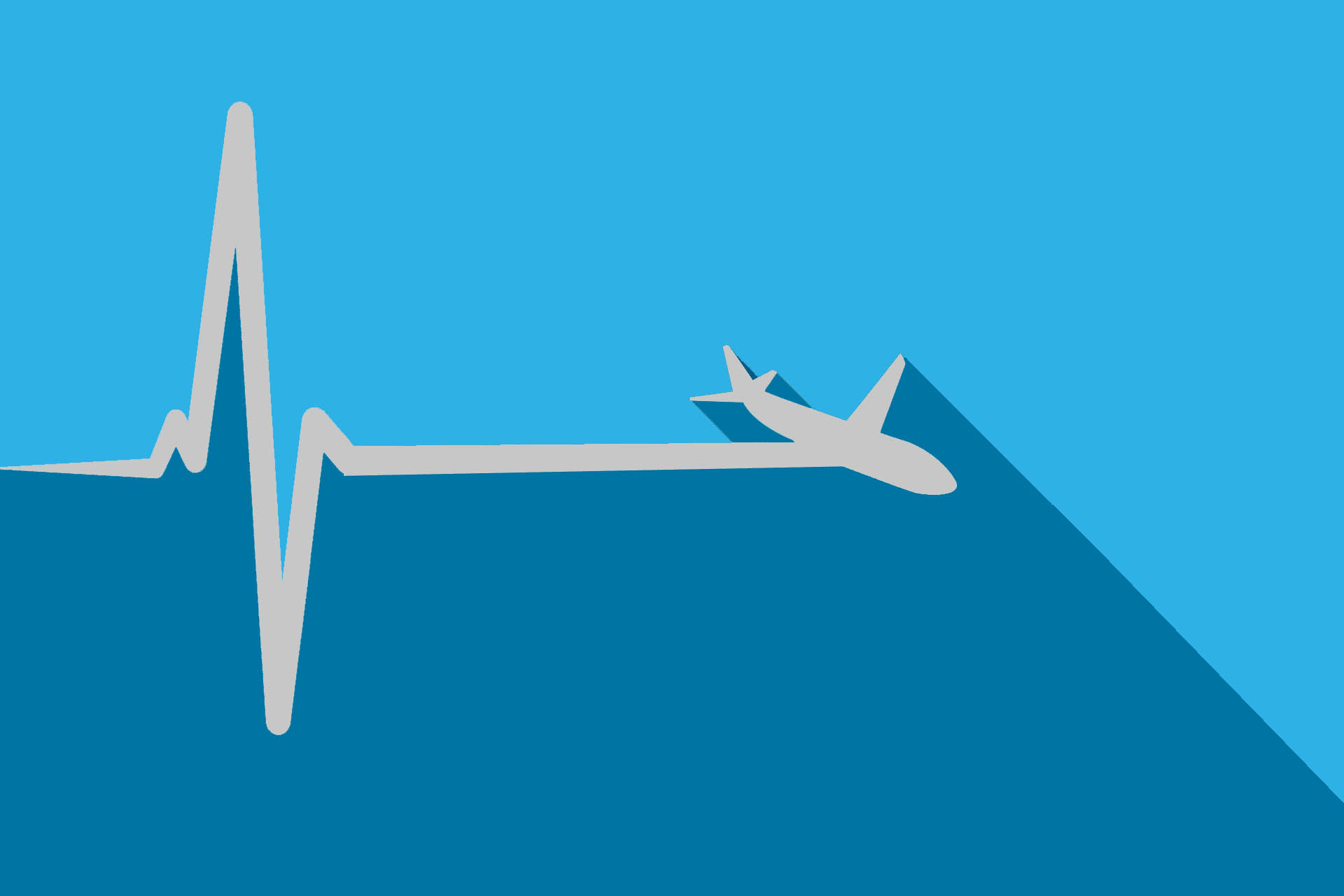Is stress good or bad?
Different approaches to stress management
Have you ever encountered a sabre-toothed tiger? Probably not, because these creatures became extinct around 10,000 years ago. Nevertheless, our brain would know exactly what to do in such a situation: flee or fight.
Our body knows two basic states: rest and activation.
When we are at rest, the part of our nervous system that we call the parasympathetic nervous system is active. We automatically breathe deeply into our stomachs, our hearts beat slowly and regularly, all parts of our bodies are well supplied with blood, and our perception is wide. We are connected to our fellow human beings, our digestive systems are active.
In the state of activation, known as arousal, our sympathetic nervous system is in overdrive. Controlled by hormone releases, we breathe faster and shallower into our chests as if by magic, our perception is narrow. Our heart beats faster, the large muscles are well supplied with blood (so that we can run faster or strike harder), the blood withdraws from the outer extremities (so that we do not bleed to death immediately if the sabre-toothed tiger bites off our hand). The composition of the blood also changes. Digestion is also suppressed. We notice this from our dry mouths, because spitting is the first stage of digestion, or also from the fact that we simply don’t have to go to the toilet. That would be somewhat inconvenient if fleeing from a sabre-toothed tiger.
When we approach the topic of stress, it is important to understand that the human body is designed for both conditions. For example, activation automatically makes us more attentive and less prone to error. However, if the heart rate is permanently increased without relaxation taking place, the constantly overstrained heart muscle will become ill. If digestion is suppressed, there is a risk of gastrointestinal tract diseases. And if our perception is permanently focused, we miss important things left and right and we stop connecting with the people around us. The interaction is controlled by the release of hormones in our brain that activate one or the other state.
The polyvagal theory by Steven Porges
Now, you might think that we are helplessly at the mercy of the hormonal confusion in our bodies. However, Steven Proges [1], an American psychiatrist and neuroscientist, has described in his polyvagal theory that not only can the release of hormones cause a physical state, but that a consciously adopted physical state can also influence the release of hormones. [2] We can consciously shape our emotional experience and do not have to be slaves to our state of mind.
Porges distinguishes between three different states:
- rest,
- arousal and
- overexcitation.
In a state of rest, I am relaxed, calm, in contact with myself, my fellow human beings and my environment, I am attentive, curious, have a broad and conscious perception and feel grounded.
In a state of agitation, there are two paths I can take: fight or flight! In both cases, my perception becomes focused. I go into a tunnel. If the tunnel is called fight, feelings such as frustration, annoyance, anger and aggression arise. In the flight mode, feelings such as worry, fear or panic dominate.
All in all, this state sets me in motion, either forward or backward. Both are helpful. One makes me more assertive, the other ensures a clever retreat. In fact, fear is a very important skill. In evolution, there were the fearful and the dead; we are the genetic remnant of the fearful, because the dead often simply could not pass on their genes! Incidentally, the modern and socially adequate form of escape is inner retreat!
The state of over-excitement leads to a kind of paralysis due to excessive demands. Feelings such as hopelessness, disorientation, dullness, depression, shame and helplessness set in. Some people even faint in this state.
In terms of evolutionary history, the body has prepared itself for a death that is as painless as possible. While in a state of arousal, everything inside me screams, ‘I can!’ In a state of over-arousal, my mind screams, ‘I can’t!’
In times when we would have preferred to live in caves and beat each other to death, all of this certainly made sense. The problem today is that this part of the brain, the amygdala, does not distinguish between concrete and abstract danger. There is only absolute safety or absolute danger. A colleague who forcefully expresses an opinion contrary to our own is as dangerous as a sabre-toothed tiger for the amygdala. I either fight or flee or feel powerless!
Emotional control through the vagus nerve
These states, as described by Porges and as we experience them, are controlled by a large nerve that runs throughout our entire body: the vagus nerve.
The ventral vagus nerve runs along the front of our body and the dorsal vagus nerve runs along the back. The ventral vagus nerve is responsible for relaxation and safety, while the dorsal nerve is responsible for arousal, tension, fight, flight and freezing.
So far, so interesting, but not revolutionary. However, Porges has shown that you can consciously control both parts of the vagus nerve and thus regulate your arousal, i.e. the intensity of the state of arousal, or, more simply, your stress level. So I can consciously use my body to influence the hormonal cocktail that floods my body.
Usually, people want to lower their stress level. This means they have to address the ventral vagus nerve. Either I consciously breathe deeply into my stomach (there are various breathing techniques for this), or I take advantage of the fact that the ventral vagus nerve runs directly through my face. I can pull up the corners of my mouth and consciously stimulate my relaxation nerve. This then signals to the brain: ‘Hey, stop releasing all those stress hormones. Our person is relaxed. They are even smiling!’
A third possibility is conscious orientation in space. To get out of the tunnel, it helps to consciously perceive every single person in the environment and to make contact with them. [3] From a neuroscientific point of view, this is more helpful for stage fright than seeing the audience as a large grey mass.
Incidentally, there are also situations in which people consciously want to create tension, i.e. consciously stimulate the dorsal vagus nerve. For example, athletes consciously enter a ‘tunnel’ before a competition. They shut themselves off in order to have that extra portion of energy and blood in the large muscles, purely from a physiological point of view, in order to achieve absolute peak performance. Then the competition can begin!
The luck factor of stress
There is another research approach on the subject of stress:
‘If you decide to view your stress reactions as helpful, you create the biological prerequisite for courage.’ – Kelly McGonigal [4]
Bam! That quote hit me when I read it for the first time. For decades, the focus was on reducing stress, dividing stress into positive and negative stress, and trying to stay calm or become calm. This approach is still absolutely valid today and I like to use it in my coaching via the polyvagal theories. [5] However, intuitively, I was always looking for an alternative for myself.
One reason why I never really warmed to classic stress management à la ‘reduce your stress’ is simple: I love my stress and need it! More than once I was told that this was an unhealthy attitude. But then Kelly McGonigal came along and showed me that I’m actually a stress lover – and that’s perfectly fine! It can even be healthy, because it helps me strengthen and grow my brain!
But let’s start at the beginning: stress is simply a physical reaction in which certain hormones are released. The best known is certainly adrenaline, but cortisol and the growth hormone DHEA are also part of this cocktail that makes our heart beat faster, our breathing shallower and our palms sweaty or gives us a queasy feeling in the stomach and a dry mouth. These are all perfectly normal physical reactions that are nothing to worry about.
It gets interesting when we evaluate these physical reactions. There are moments when we feel the same feeling in our stomachs as either butterflies or excitement because we are looking forward to something. In other moments, we feel the same feeling as a queasy feeling in our stomachs and think that we are afraid of something. McGonigal was able to prove that the physical reactions are the same for fear and anticipation. The difference lies in our evaluation.
An example from my everyday life:
I love being on big stages! It just feels good. There are people who don’t like it at all and have to overcome themselves to go on stage. When I ask these people how their stage fright feels exactly, I often hear statements like, ‘I get heart palpitations and clammy hands. My mouth gets all dry. I feel like I can’t take a deep breath.’
These reactions fuel the fear.
And how do I feel before I go on stage? My mouth gets really dry, I can feel my heartbeat clearly, my hands sometimes get clammy, I have to go to the toilet again and my breathing is fast and shallow. My system interprets these reactions as anticipation and impatience until it finally starts!
According to McGonigal, it’s not about reducing stress itself, but rather about working on your evaluation system first. And as coaches, we work on evaluation systems with our clients over and over again. So why not in this context as well?
Stress can make your brain grow
All in all, McGonigal’s research has shown that people can be divided into two groups:
- those with a positive stress mindset and
- those with a negative stress mindset.
Among other things, she found that people with a positive stress mindset are less likely to suffer from post-traumatic stress disorder (PTSD), which was of great interest to the US Army. Students with a positive stress mindset generally seem to get through their studies better than their peers with a negative stress mindset, including in terms of grades.
The definition of mindset in this context is as follows: ‘a belief that determines our thoughts, feelings and actions in advance’. It is therefore a kind of filter through which we view the world.
Together with her colleague Alia Crum, McGonigal found that the different mindsets have no influence on the release of stress hormones, but they do affect the composition of the respective hormone cocktail. Two hormones are particularly relevant here: cortisol and dehydroepiandrosterone (DHEA). Cortisol helps to convert sugar and fat into energy and suppresses bodily functions that are less important under stress (e.g. digestion, reproduction and growth). DHEA belongs to the group of so-called steroids and promotes the growth of our brain (similar to testosterone and muscles). It also balances the effects of cortisol in some areas. Both hormones are important, but their relationship to each other is also important to understand McGonigal’s approach.
McGonigal refers to the ratio of cortisol to DHEA as the Growth Index of the stress response. The higher the growth index (i.e. the more DHEA was measurable in the saliva of the subjects in relation to cortisol), the more a person can actually benefit from stress. In the academic environment of the university, this promoted the stamina and resilience of the students, and in the military, a higher growth index reduced the likelihood of developing PTSD after a critical mission.
Conclusion
Stress itself is neither good nor bad – it depends on how we perceive and evaluate it. While our body has been prepared for stressful situations such as flight or fight since the Stone Age, we know thanks to modern approaches such as the polyvagal theory of Steven Porges or the research of Kelly McGonigal that stress can also be used positively. With the right attitude and techniques such as consciously activating the vagus nerve or a positive stress mindset, stress can not only increase our performance but also make our brain grow. How we evaluate stress and what measures we take to use it constructively is crucial.
Notes:
Would you like to work on your stress mindset? Then get in touch with Constance Ratazzi-Nelles, who is always happy to help people on their way. Because one thing is clear (and McGonigal is also very clear about this): avoiding stress is not a solution.
[1] Wikipedia: Steven Porges
[2] Wikipedia: Polyvagal theory
[3] There is a 4th option: the ventral vagus nerve can also be stimulated with tapping acupressure.
[4] Kelly McGonigal: The Upside of Stress: Why stress is good for you (and hot to get good at it).
[5] In Constance Ratazzi-Nelles’ stress management coaching sessions, the first step is to help coachees become aware of the state they are in. The aim is to work out the differences between the states of relaxation, fight, flight and freeze. In the second step, suitable strategies are developed to consciously switch between the states, especially into a more relaxed state.
If you like the post or want to discuss it, please feel free to share it with your network.
Constance Ratazzi-Nelles has published two more posts on the t2informatik Blog:

Constance Ratazzi-Nelles
Constance Ratazzi-Nelles has her professional roots in aviation, where she worked for 21 years, first as a cabin crew member and then as a human factors or crew resource management trainer. In 2019, she started her own business as a part-time trainer and human factors consultant with her platform Impuls, with which she brings the approaches from human factors training in aviation into the business world with a special focus on the connection between subjective perceived psychological safety and high performing teams.
At the end of 2020, she decided to leave aviation. Since then, she has worked as a Change & Transformation Consultant for an international bank and has specialised in the fields of executive coaching and resilience, i.e. stress and anxiety management, burnout prevention and consciously shaping work-life balance in her self-employment as a coach and consultant.
As a keynote speaker, she presents the topic “Psychological Safety & High Performance – What the business world can learn from aviation”. As a guest lecturer, she also presents this topic annually at the Faculty of Economics at Maastricht University as part of the Master’s programme.

